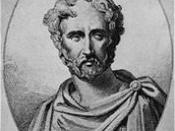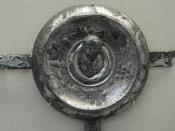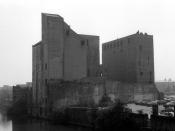Temple of Jupiter
At the northern side of the Forum is the Temple of Jupiter. Built in 150 B.C it was Pompeii's main temple. A Capitolium in structure and in pure Italic style, the temple was constructed on a high base, with a double flight of stairs at its front. Inside the temple lay the "cella", accessible only to the priests, and which contained three stands at its far end. Theses stands were occupied by statues of Juno, Jupiter, and Minerva. In 62 C.E., the temple was seriously damaged in an earthquake, and was in the process of being repaired until Mt Vesuvius erupted. In this physical source some problems such as the earthquake and the volcanic eruption had damaged the temple which could have destroyed some of the important things the temple and priests would have done regarding the worship of the gods. The information this temple provides is what and how did the people of Pompeii worshipped their gods and how sacrifices were performed by the priest.
These things would help us understand the gods and worship as well as how religion affected everyday life of the Pompeians. Being physical remains from the ancient city it would be referred as a reliable source to work off.
Temple of Isis
The temple of Isis is located at the north-west part of the city. This cult originated in Egypt these physical remains of the temple were the best surviving out of the cities remains after the eruption. These rooms show the wall paintings removed from the temple of Isis in Pompeii in the years 1764-66. Their style is typical of the Hellenistic-Roman artistic tradition, but they include many elements of the cult of Isis and Nile valley culture. Also on display are all the artefacts found in the temple:...


